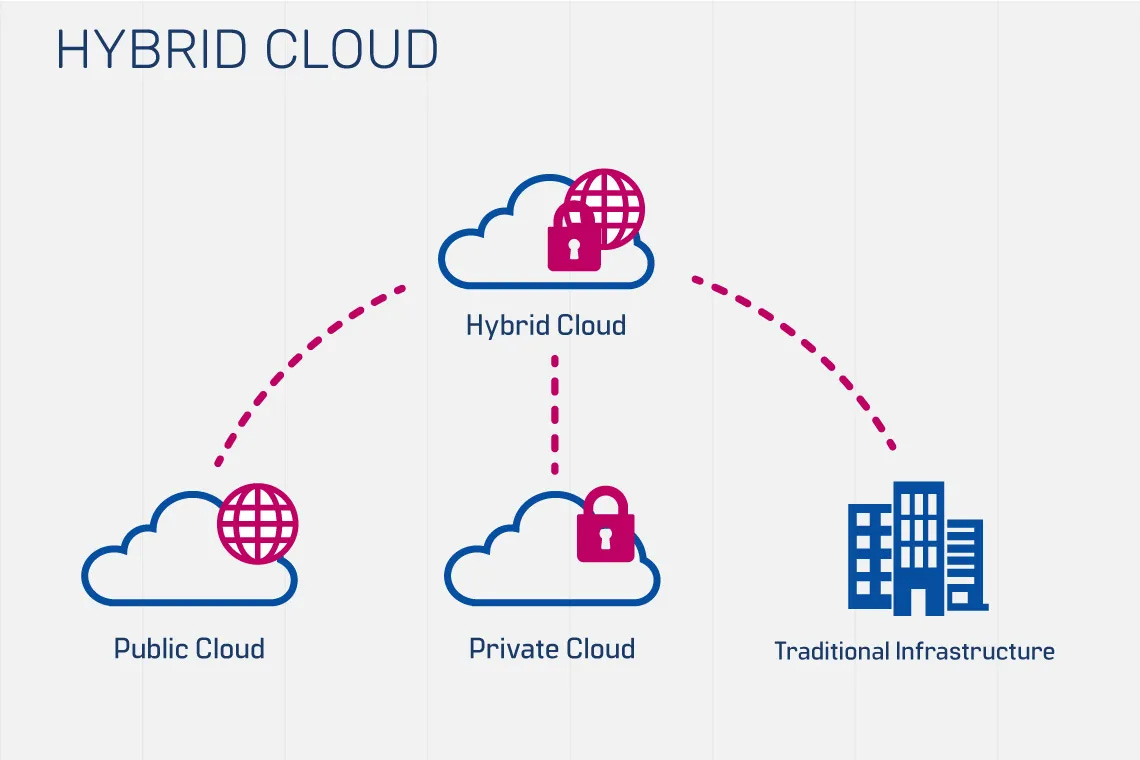From Legacy Systems to Hybrid Cloud: Building Sovereignty and Resilience
Aetosky’s Framework for Hybrid Cloud Modernization
In an era where digital transformation is pivotal, government agencies face the dual challenge of modernising legacy systems while ensuring data sovereignty and operational resilience. Legacy infrastructures, though historically reliable, often lack the flexibility to integrate emerging technologies such as AI, edge computing, and real-time analytics.
The Strategic Imperative for Hybrid Cloud
Hybrid cloud computing - integrating on-premises infrastructure with cloud services - offers a transformative pathway for government entities to modernize operations without compromising control. This approach enables:
Mission-Critical Autonomy: Deploying essential workloads within on-premises private data centers or secure tactical nodes ensures uninterrupted operations, even when disconnected from broader networks.
Controlled Data Sovereignty: Sensitive data remains under national jurisdiction at all times, ensuring operations continue without reliance on external providers or foreign-controlled infrastructure.
Operational Scalability: Non-sensitive workloads can scale rapidly in private cloud environments, supporting high-volume services without overprovisioning costly on-premises infrastructure.

Benefits of Hybrid Cloud for Government Operations
1. Mission-Critical Autonomy and Resilience
Local Operations When Disconnected: Even if disconnected from the internet or national command centers, private data centers and field-deployed edge nodes can continue operating independently.
Continuity Under Adversity: In kinetic warfare, natural disasters, or cyber disruptions, sovereign environments maintain core functionality without relying on vulnerable external networks.
2. Data Sovereignty and Strategic Control
Absolute Data Residency: Sensitive information (e.g., intelligence reports, national ID databases, troop deployments) never leaves national borders.
Jurisdictional Independence: Avoid reliance on foreign cloud providers who may be subject to external government subpoenas, foreign influence, or hostile cyber tactics.
3. Elastic Scalability and Cost Optimization
Scale Resources On Demand: Citizen service portals (tax filings, emergency assistance, healthcare registration) can automatically scale during surges without pre-building expensive permanent infrastructure.
Flexible Workload Segmentation: Non-sensitive workloads (e.g., appointment systems, benefit disbursements) can run on elastic cloud infrastructure, reserving private data centers for mission-critical systems.
4. Accelerated Innovation and Application Deployment
On-Demand Test and Development: Ministries, defense agencies, and civic teams can develop, test, and deploy new digital capabilities rapidly without waiting months for infrastructure approval.
Shorter Development Cycles: Hybrid architectures enable agile prototyping for AI surveillance tools, smart city dashboards, predictive maintenance systems, and more.
5. Seamless Multi-Domain and Multinational Operations
Federated Identity Across Domains: Army, Navy, Air Force, and civil organizations can operate on a federated system - maintaining individual control but ensuring operational interoperability.
Coalition-Ready Architectures: Hybrid cloud enables secure collaboration with allies without exposing national systems to unnecessary risk.
The Legacy Burden: Strategic Challenges in Government and Defense Operations
Governments are encumbered by monolithic systems - often developed decades ago. While these systems have delivered dependable functionality, their limitations are becoming acute.
Inflexibility in Modern Operations
Legacy platforms - whether supporting logistics, C4ISR (Command, Control, Communications, Computers, Intelligence, Surveillance, and Reconnaissance), or cyber defense - are ill-equipped to integrate emerging technologies such as artificial intelligence (AI), edge computing, and real-time analytics.
Accumulated Security Debt
Outdated software, unpatched vulnerabilities, and brittle system architectures provide fertile ground for nation-state adversaries and sophisticated cyber attackers, creating unacceptable risks to mission-critical operations.
Unsustainable Cost Curves
The financial burden of maintaining aging systems grows exponentially over time, often surpassing the cost of modernization. Ongoing patchwork solutions drain resources that could otherwise accelerate digital transformation.
Limited Mobility and Scalability
Legacy architectures are incompatible with the demands of expeditionary, distributed, or multi-domain operations. Infrastructure that cannot dynamically adapt - whether for battlefield command, remote civil services, or disaster recovery - compromises strategic agility and mission assurance.
Aetosky’s Sovereign Hybrid Cloud Framework
At Aetosky, we have built a best-practice, defense-grade hybrid cloud implementation framework aligned with industry-leading standards such as:
NIST SP 500-292 (NIST Cloud Computing Reference Architecture)
NSA/CISA Secure Cloud Adoption Principles
Defense Information Systems Agency (DISA) Cloud Security Requirements Guide (SRG)
Zero Trust Architecture (NIST 800-207)
Our framework is structured around five critical pillars:
1. Sovereign Foundation Layer
Private Data Centers: Government-owned or government-leased facilities with direct control over physical and logical assets.
Private Cloud Platforms: Sovereign cloud instances designed for high assurance workloads, managed with national security-grade governance.
Data Residency Enforcement: All sensitive and classified data remains within nationally controlled jurisdictions.
2. Secure Interoperability Layer
Secure APIs and Connectors: Federated identity and access management (IAM) frameworks across public/private domains.
Zero Trust Networking (ZTN): Every user, device, and application must continuously verify its trustworthiness before accessing resources.
Classified/Unclassified Segmentation: Multi-level security (MLS) architectures to separate sensitive and non-sensitive operations seamlessly.
3. Agile Workload Orchestration Layer
Elastic Workload Mobility: Applications can move dynamically across cloud, edge, and on-premise environments.
Edge Compute Enablement: Field-deployable tactical nodes running containerized workloads with synchronization capabilities.
Mission-Adaptive Scaling: Rapid provisioning and de-provisioning of resources based on real-time operational needs.
4. Continuous Security and Compliance Layer
Automated Compliance Monitoring: Built-in frameworks to continuously monitor compliance with national cybersecurity directives.
Integrated Threat Detection: Native telemetry collection from all hybrid cloud components feeding into central threat detection and incident response systems.
Auditability and Forensics: Immutable logging, encryption-at-rest and in-transit, verifiable chain-of-custody for sensitive data.
5. Strategic Governance and Optimization Layer
Cloud Policy Enforcement Points: Strict adherence to data sharing, storage, and access control policies.
Cost Transparency and Resource Optimization: Governmental agencies can monitor, predict, and optimize cloud spending across private and hybrid environments.
Sovereign Vendor Management: Strict contracting policies ensuring that no vendor lock-in or foreign control risks compromise national security.
Why Full Legacy Replacement Isn’t Always the Best Path
Despite the urgency to modernize, wholesale replacement of legacy systems carries extreme risks:
Mission-Critical Dependence: Many legacy systems underpin command-and-control, radar systems, or logistics pipelines that cannot afford downtime.
Certification Bottlenecks: New systems must undergo extensive security and compliance certification cycles.
System Interdependencies: Legacy systems often integrate deeply with dozens of other critical platforms.
Aetosky's Modernization Strategy: Coexistence and Progressive Transition
Rather than "rip and replace," Aetosky supports a phased modernization approach:
Encapsulation of Legacy Systems: Wrapping legacy platforms with secure APIs to interface with modern hybrid cloud environments.
Digital Twins for Progressive Migration: Building virtual replicas of legacy environments to safely test, optimize, and transition workloads.
Edge Modernization for Immediate Impact: Deploying new tactical capabilities at the edge while maintaining operational continuity at the core.
The Path Forward: Sovereign Digital Governance
In the contested, connected battlespace and the ever-demanding public sector landscape, agility, resilience, and sovereignty will define success.
Hybrid cloud architectures - anchored by sovereign infrastructure and governed by security-first principles - will become the new operating backbone for government and defense.
At Aetosky, we are proud to offer more than modernization - we deliver sovereign advantage.
We don’t just upgrade systems; we fortify missions.





